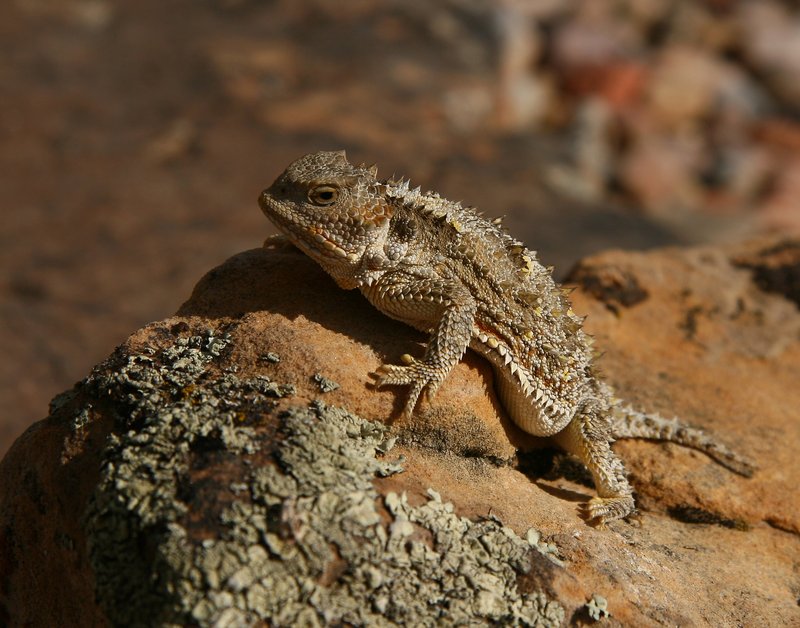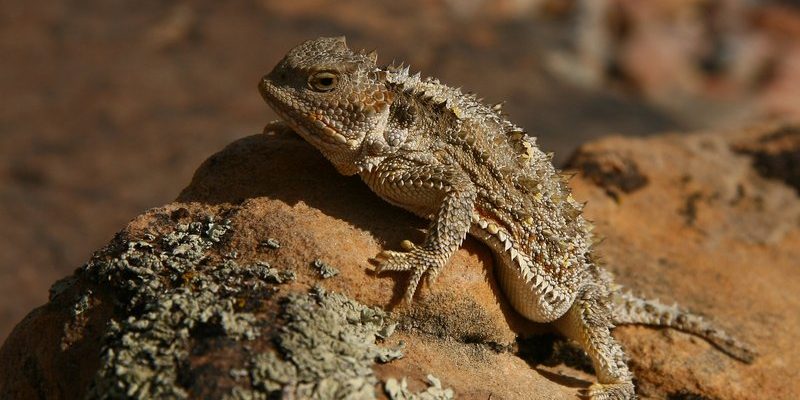
So, what exactly does a horned lizard do? Well, it’s not just lounging around and looking cute. These lizards are part of a complex web of interactions that keep ecosystems healthy. From controlling insect populations to serving as prey for larger animals, horned lizards have a hand—err, claw—in maintaining the stability of their habitats. Let’s dig deeper and discover how these spiky little guys fit into the bigger picture.
Understanding the Horned Lizard
Horned lizards are easily recognizable thanks to their distinctive body shape and the spiky horns that protrude from their heads. These adaptations aren’t just for show; they provide protection from predators. When threatened, a horned lizard can flatten its body and blend into the rocky ground, making it less visible. Some species can even puff themselves up to appear larger!
You might be wondering, “What do horned lizards eat?” Well, primarily, these reptiles enjoy a diet of ants and other small insects. Their specialized mouths allow them to capture these quick-moving snacks effortlessly. This diet not only keeps them nourished but also helps control the populations of these insects, which in turn supports the health of their environment.
Basically, horned lizards are like little pest controllers, maintaining the delicate balance of their desert homes. With their unique adaptations and diets, they play a crucial role in ensuring the ecosystem remains functional and thriving.
Their Role as Prey
Now let’s talk about the flip side of the ecosystem coin: horned lizards as prey. They may seem tough with their spiky appearance, but they are an essential food source for several larger animals. Birds of prey, foxes, and other mammals rely on horned lizards for sustenance. Think of them as a stepping stone in the food chain—a link connecting plants and smaller creatures to larger predators.
When horned lizards are abundant, they provide a reliable food source for these predators, helping maintain their populations. However, if horned lizards were to decline, it could disrupt the whole system. Predators might struggle to find enough food, leading to a decline in their numbers, which could further affect other aspects of the ecosystem.
In this way, horned lizards contribute to the balance of life in their habitats, ensuring that all species have the resources they need to thrive.
Controlling Insect Populations
As we mentioned earlier, horned lizards primarily feast on ants and other small insects. This might not sound like a big deal, but consider this: insects can reproduce rapidly and, if left unchecked, can become pests. Here’s the thing: horned lizards eat a significant number of these insects, acting as natural pest controllers.
By maintaining the population of insects, horned lizards help prevent agricultural damage and keep their ecosystems healthy. For example, a large population of ants could damage crops or even disrupt other small wildlife. With horned lizards around, these little pests are kept in check, contributing to a balanced food web where plants, insects, and animals can coexist peacefully.
In a nutshell, horned lizards are the unsung heroes of the insect world, ensuring that no single pest gets out of hand.
Habitat and Environment
Horned lizards typically thrive in arid regions like deserts and scrublands. These environments may seem harsh, but they are perfectly suited for horned lizards. Their body shape and coloration help them blend into rocky surroundings, making it easier to hide from predators.
But their habitat isn’t just a cozy spot to sunbathe; it’s also a crucial part of their survival. These lizards rely on a variety of plants for shelter and, interestingly, some of those same plants play a role in their diet. The interconnectedness of plants and horned lizards showcases how every species, no matter how small, has a role in the ecosystem.
If their habitat were to change due to human activities or climate change, it could disrupt these delicate relationships. Therefore, protecting their environments is essential for the overall health of the ecosystem they inhabit.
Horned Lizard Conservation
Given their importance, conserving horned lizards and their habitats is vital. Human activities, like urban development and agriculture, can threaten these reptiles and the ecosystems they support. If you care about wildlife, you might be wondering how you can help.
There are a few key ways to contribute to horned lizard conservation:
- Protect their habitats: Support initiatives that focus on preserving natural areas, especially those that are crucial for horned lizards.
- Advocate for responsible land use: Encourage policies that minimize habitat destruction and promote sustainable agriculture.
- Educate others: Share information about the importance of horned lizards and their role in the ecosystem.
By taking these steps, we can help ensure that horned lizards continue to thrive and fulfill their roles in maintaining ecological balance.
In summary, horned lizards might be small, but their impact on the ecosystem is anything but insignificant. They keep insect populations in check, serve as prey for larger animals, and play a crucial part in the food web. Plus, their unique adaptations and behaviors make them a fascinating species to study.
As we navigate a world full of challenges, from habitat loss to climate change, recognizing the importance of horned lizards and other wildlife is more critical than ever. By understanding and valuing these remarkable creatures, we can take steps to protect them and the delicate ecosystems they inhabit. After all, every spiky little lizard holds a piece of the puzzle that makes our world complete.

